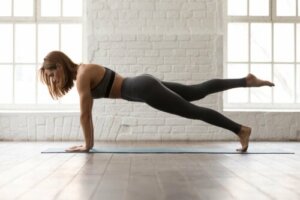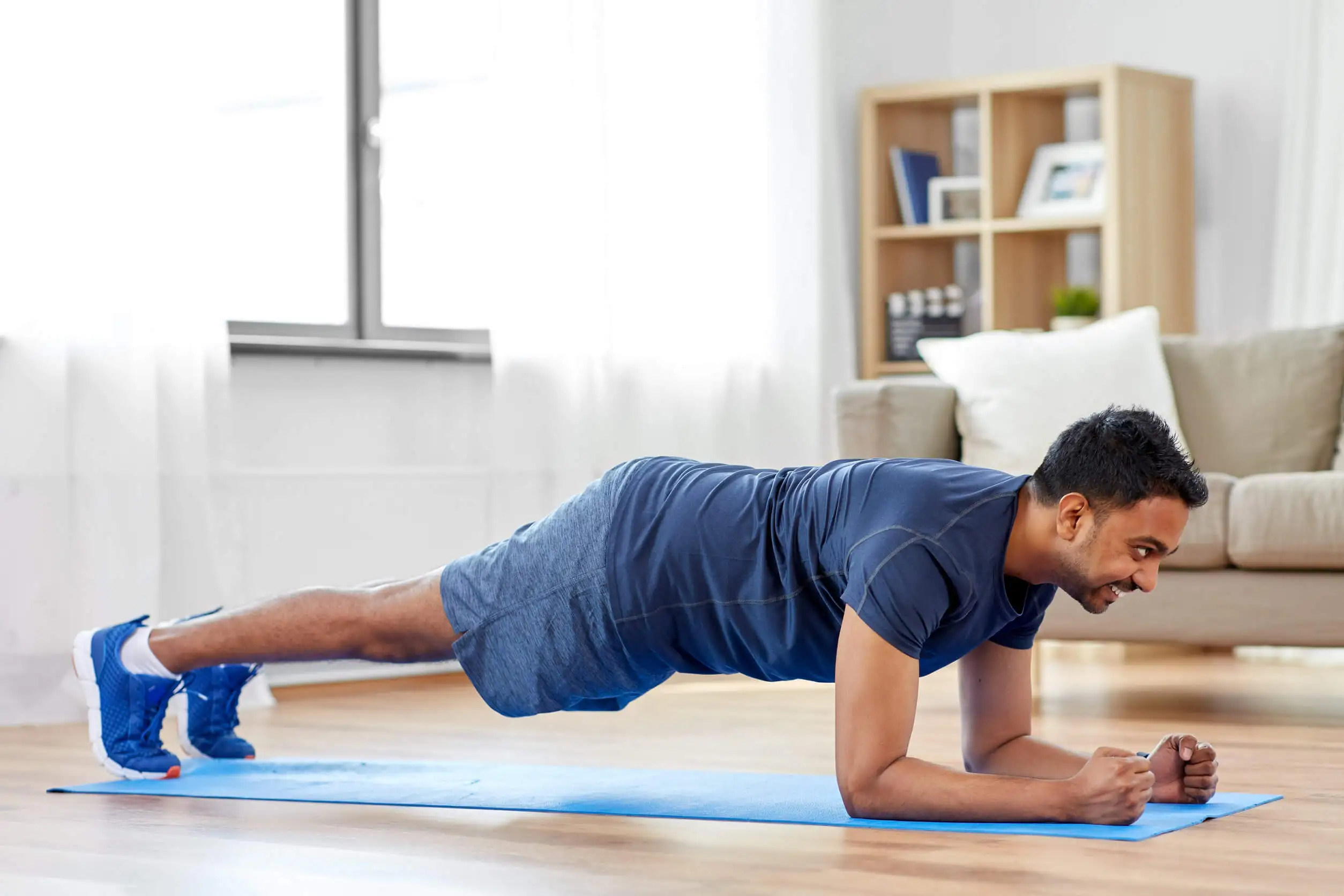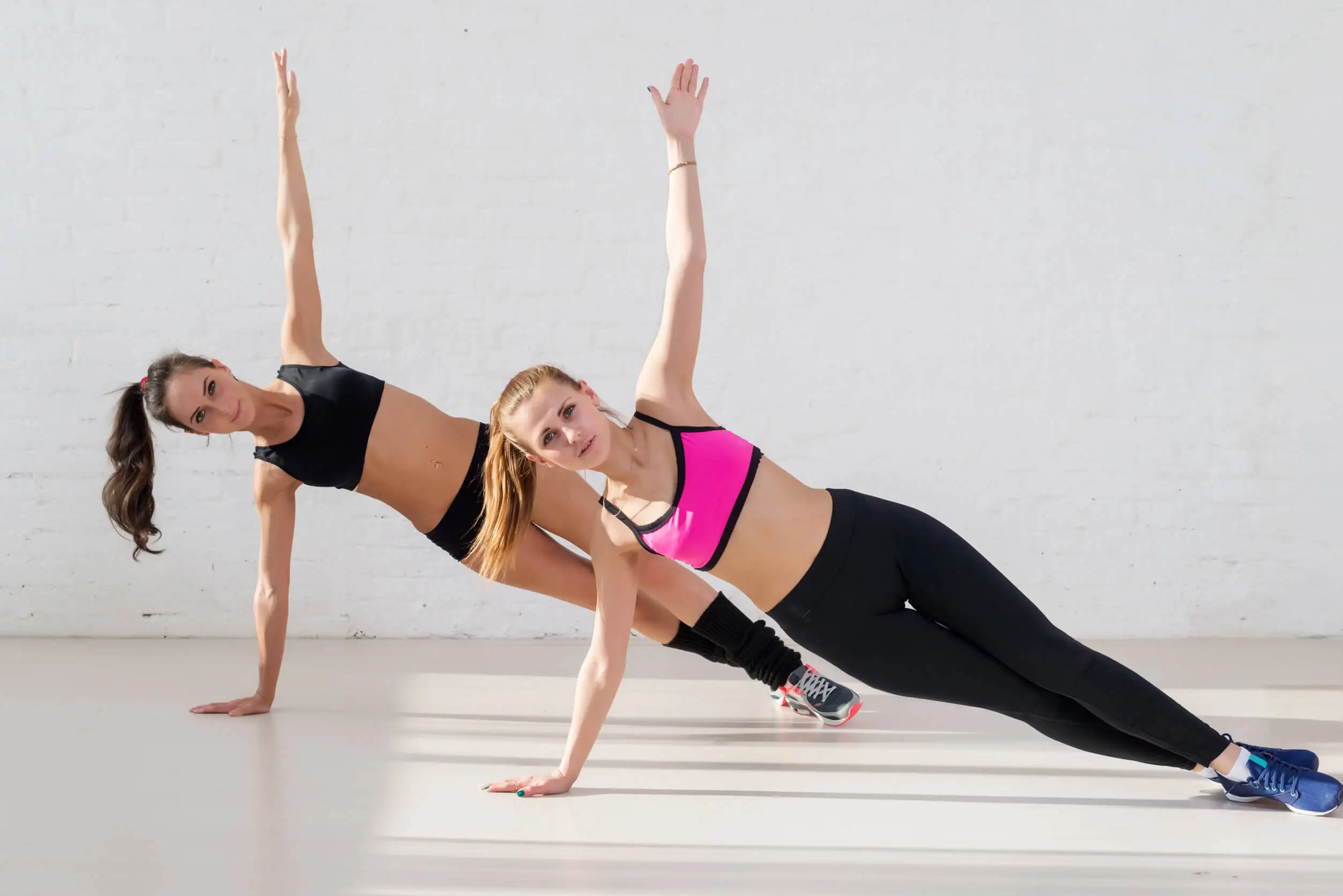9 Plank Variations for Perfect Abs


Reviewed and approved by the doctor Diego Pereira
Planks have become a favorite exercise to work the abdomen. This is an isometric activity that doesn’t require specialized equipment, can be done at home, and provides resistance and strength in the core area. Although most people know only one way to do them, there are actually different plank variations for perfect abs – and they’re easy to perform, too!
Knowing them is important to avoid stagnation and give plurality to your ab workout routines. If you’re not looking to tone up, they can also be useful for treating back problems, gaining balance, and including physical activity in your daily routine.
What muscles are worked when doing planks?
Before we outline some plank variations, it’s important to first understand the muscle groups that are activated when doing them. Although they are used to work the abdomen, in fact, doing a plank activates the entire core area.
The core is an area that comprises a multitude of muscle groups, including the glutes, pelvic floor, lower back, diaphragm, spinal muscles, and abdominals. But that’s not all; being a comprehensive exercise, and if plank variations are incorporated into the weekly plan, the muscles of the following locations are also activated:
- The arms (the biceps, triceps, and forearm)
- The shoulders (the anterior and posterior deltoid)
- The upper back (the trapezius and rhomboids)
- The legs (quadriceps and biceps femoris)
If we concentrate on the core area, when doing plank we work the following abdominal groups: the rectus abdominis, the transverse abdominis, the internal and external obliques, and the pyramidal. Depending on the type of plank you do, you can also work the chest.
This exercise works much more than just the popular six-pack. Being a compound activity (i.e. involving several muscle groups) its benefits are greater. Among the main ones, we can highlight the following:
- It improves your balance and flexibility.
- This exercise prevents back, neck, and lower back pain.
- Planks correct your posture and improve your coordination.
- It strengthens the core area and helps define your abs.
- This exercise elps control your body weight and provides physical activity to your daily routine.
It can also be used as a complementary treatment for some conditions. For example, planks are known to be useful in treating abdominal diastasis, especially in postpartum women. Research suggests that it can be useful for pelvic asymmetry and studies suggest its effectiveness in counteracting lower back pain.
9 plank variations for perfect abs
Now that you know all the attributes of doing planks, it’s time for you to discover all the types you can do. Remember that, as with any physical activity, you must warm up and stretch your muscles. As there are several people involved, make sure that these are comprehensive.
As soon as you finish doing them, consider doing some of these plank variations for perfect abs. We have organized them according to their complexity so that you can incorporate them according to your level.
1. Classic planks with your arms straight
This type of plank is the one that everyone thinks of when they start doing this exercise. Its level of difficulty is medium and it’s an excellent starting point if you have been inactive for a long time. Its correct execution involves the following steps:
- Lie face down on the floor and stretch your arms in a straight line imitating a push-up posture.
- Fully straighten your feet, bring them together, and create a straight line from your head to your heel.
- Your elbow should be just below your shoulder and your hip and pelvis aligned with your shoulder and pelvis. You should form a perpendicular line with the floor.
- Your gaze should be directed towards the floor so that it follows the natural position you are in. Don’t move your neck up or down, as this can create neck tension.
- Tighten your abdominal area, strengthen your arms and legs, and hold this posture for several seconds.
- Rest for an average of 30-60 seconds and then repeat the steps.
If you are a beginner the rest times may be longer, as well as how long you last with each set. Ideally, you should do between 20-30 seconds if you’re a beginner so that you then increase as you gain strength and endurance.
Like this article? You may be interested in reading: The Benefits of Doing Planks
2. Planks with your elbows supported

This is a variant of the classic plank that allows you to involve the muscles of the upper trunk, especially the arms, shoulders, and chest. It’s one point higher in difficulty and can be performed as follows:
- Stretch on the floor imitating a push-up posture.
- Gather your arms so that your forearms touch the floor at a 90-degree angle.
- As you are comfortable, you can either narrow your palms into a pyramid, spread your forearms shoulder-width apart in a perpendicular line, or bring them together over each other under your chin.
- The other parts of the body will follow the instructions of a classic plank: hips and pelvis at shoulder height, feet together and straight, and eyes on the ground.
It’s important that your elbow is just below your shoulders because if you move it forward or backward you generate tension, discomfort, and even pain. By also working the upper trunk area you may require shorter sets in contrast to the previous plank variation.
3. Planks with one leg lifted
Although the goal of isometric exercises is to perform in a static position, by including movement you increase the tension in the trunk. To do variations of the plank with a raised leg, follow these instructions:
- Lie on your stomach and mimic the traditional plank position.
- Spread your feet a couple of centimeters apart and then lift your right foot off the floor and make oscillating movements.
- Maintain this rhythm throughout the plank. When you finish, apply the same sequence with the left foot.
In case you can’t keep your balance due to the movements, you can always try the basic execution: instead of doing swings in the air leave your foot static for 10 seconds and then alternate in the same series with its left counterpart.
4. Planks with one leg and one arm raised
Also known as the “Superman” plancha, this is a variation that we only recommend when you have already acquired sufficient endurance and strength with this exercise. It consists of the following:
- Imitate the classic plank style.
- When you start timing, raise your right leg and left arm to the same height.
- To do this you must create tension in your abdomen and place your limbs in contact with the floor so that they are in tune with your center of gravity.
- Depending on your level, maintain this position throughout the series. For the next series, you must alternate the arm and leg used.
To reduce the possibility of an accident, we recommend that you raise your limbs only a couple of centimeters. This way you can act quickly if you lose your balance. As you become more experienced, you will increase the height of your limbs at the same time.
5. Knee-to-chest plank variations
Another style to add movement to the static execution. There are many ways to do it, but the most common is as follows:
- Lie down on the floor imitating a push-up.
- When you start counting the time, raise your right leg to chest height. You can do this in a dry movement without disturbing your balance or posture.
- Return it to the starting position and now do the same with the other leg. Maintain this rhythm throughout the series.
You can also rotate the leg to the opposite shoulder and hold it in this position for a second. This way you activate the obliques and your glutes.
We think you may also like to read this article: 5 Benefits of Doing the Plank Every Day
6. Triangle planks
Also known as bridge plank, this exercise is useful to activate the muscles of the shoulders and back. Its execution requires more skill to avoid injury and is developed through these indications:
- In the classic position with your elbows supported, gently bend your hips until you reach the maximum height with your buttocks without bending your legs.
- The body should form a line from the tip of your heel to your buttocks and then from your buttocks to your elbows.
- Your gaze should be positioned according to your natural posture, so avoid looking straight ahead. Your feet will have only the toes as a point of contact.
- Maintain this tension for the stipulated time and then rest for a couple of seconds before starting the next set.
Remember that the tension in your shoulders will be greater, as well as in the lumbar area. If you feel discomfort do not hesitate to suspend the execution and try some other alternative.
7. Lateral planks

Now we’ll leave the variants of plank that are executed with the body parallel to the ground. The lateral styles work the obliques, pelvic floor, and glutes, and are developed in their classic version under these steps:
- Rest your elbow on the floor and place your body sideways. Fully straighten your legs and raise your pelvis and hips.
- Draw an imaginary line from the toes (both feet should be together) to the head. Make sure your jaw is in line with the pelvis and the pelvis is in line with the middle toes.
- Your elbow should form a straight line with respect to the shoulder and your arm should rest on your waist. Hold this position for the intended seconds and then switch to the other set to work the obliques of the other flank.
If you prefer, you can stretch the free arm to generate more tension or obtain a more stable balance.
8. Lateral plank with a knee lift
When you have mastered the technique, you can include this more difficult variation. Don’t try it if your hip collapses with the previous exercise; you could injure yourself.
- Mimic the side plank position.
- When the timer starts, raise the knee of the free leg (the one that serves as the main support) to the chest.
- Do this slowly and without engaging your back, hips, or pelvis.
- Return to the starting position and repeat the movement until the series ends.
- Change position after the rest time to perform the same steps with the other foot.
9. Lateral planks with a leg raise
To finish our plank variations for perfect abs, you can try this variation that involves all the muscles of the abdominal area and also the legs. Do it as follows:
- Mimic the classic side plank position.
- Raise the free leg (the one that does not serve as the main support) as high as you can vertically.
- Return it to the starting position and repeat this sequence until the series is complete.
- When you face the next set, alternate sides to work the other leg.
You can include oscillating movements to the front and back to generate more tension. Only integrate this style when you have mastered the previous steps.
With these nine plank variations for perfect abs, you can strengthen the entire core area through exercises that avoid monotony. Many other styles can be derived from them – as many as your imagination, endurance, and strength allow you to explore!
To avoid injuries and perform the movements correctly, we suggest you keep these key principles in mind:
- Place the timer or cell phone at a visual angle so that you can see it without turning your head so much.
- Use a mat or gloves if the floor does not provide enough friction.
- Remove furniture, tables, and chairs to make space and provide a sense of freedom.
- Stretch all muscle groups before starting. It’s also advisable to do so afterward to avoid injuries.
- If you’re a beginner, stop a set if you feel severe pain in your back, neck, and shoulders.
- Tighten your core at all times to maintain your posture more efficiently.
If you include the plank variations for perfect abs in your routine to work the abdomen, don’t forget to complement it with other comprehensive and specific exercises for this area. This way, you will get results in less time.
All cited sources were thoroughly reviewed by our team to ensure their quality, reliability, currency, and validity. The bibliography of this article was considered reliable and of academic or scientific accuracy.
- Akuthota, V., Ferreiro, A., Moore, T., & Fredericson, M. Core stability exercise principles. Current sports medicine reports. 2008; 7(1): 39-44.
- Chase, K. A., Brigham, C. E., Peterson Facsm, J. T., & Coste, S. C. Fitness norms for the plank exercise. In International Journal of Exercise Science: Conference Proceedings. 2014; 8 (2): 14.
- Lee, D., Lee, Y., Cho, H. Y., Lee, K. B., Hong, S., Pyo, S., & Lee, G. Investigation of trunk muscle activity for modified plank exercise: A preliminary study. Isokinetics and Exercise Science. 2017; 25(3): 209-213.
- Oliver, G. D., Dwelly, P. M., Sarantis, N. D., Helmer, R. A., & Bonacci, J. A. Muscle activation of different core exercises. The Journal of Strength & Conditioning Research. 2010; 24(11): 3069-3074.
This text is provided for informational purposes only and does not replace consultation with a professional. If in doubt, consult your specialist.








